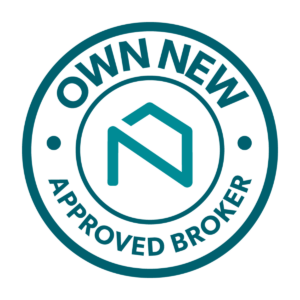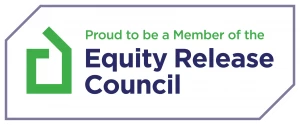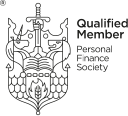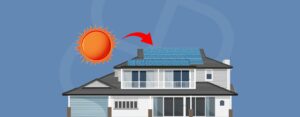Green Mortgages in 2025: What Are They and Are They Worth It?

If you’re an energy-conscious person and are looking for more ways to make your home more energy efficient, then you might have heard about green mortgage loans.
But what is a green mortgage?
The premise is if you’re moving into an energy efficient home or are actively making your property more energy-efficient and greener, then your lender can reward you with unique mortgage products and rates. But will this benefit you?
In this article, we’ll explore everything you need to know about green mortgages in 2025, from how they work in principle, who qualifies, and the list of lenders that are currently offering green mortgages today. Let’s jump in.
- What is a Green Mortgage?
- How Do Green Mortgages Work?
- Can You Get a Lower Interest Rate with a Green Mortgage?
- What Can I Borrow with a Green Mortgage?
- How Do I Qualify for a Green Mortgage?
- What Properties are Eligible for Green Mortgages?
- Are Green Mortgages Worth It in 2025?
- Which Lenders Offer Green Mortgages?
- Frequently Asked Questions
- Do Mortgage Brokers Advise on Green Mortgages?
What is a Green Mortgage?
A green mortgage is an incentive-based mortgage product that specifically promotes a cleaner and energy-efficient living.
At its core, green mortgages support buyers who are looking for ways to purchase energy-efficient homes, or current homeowners who are looking to upgrade their current property, in order to meet the modern environmental standards.
The main incentive of these mortgages – other than living a greener lifestyle – is that lenders will typically reward you with better financial terms should your home meet or exceed specific green building standards. The general consensus behind the green mortgage initiative is to fundamentally encourage sustainable homeownership while helping to reduce carbon footprints.
As such, you might explore a green mortgages if you are:
- Purchasing a newly built home that already meets strict energy-efficiency guidelines.
- Upgrading your existing home with eco-friendly improvements, such as modern insulation, renewable heating, or double glazing.
- Actively making sure that your property complies with the recognised green building standards.
By targeting homes that are kinder to the environment and cheaper to run, green mortgage loans align financial incentives with ecological responsibility.
At Boon Brokers, our expertise as a whole-of-market mortgage broker means that we work with a broad panel of lenders, including many that offer specialised green mortgage loans. If you’re looking for more detailed information on green mortgage incentives, our dedicated advisers can help provide you with the latest information, matching you with the ideal lender and mortgage for your unique needs.
What Our Clients Have To Say
How Do Green Mortgages Work?
Green mortgages are very similar to traditional mortgages. You will ultimately submit a mortgage application to borrow money in order to purchase a property, or to fund energy-efficient home improvements.
However, what makes a green mortgage loan unique is the financial incentives that lenders’ can offer you when your property meets specific environmental standards.
To qualify for these benefits, your home will usually need to meet an Energy Performance Certificate (EPC) rating of B or higher.
In the case that your property does not reach this standard but you’re still interested in a green mortgage loan, some lenders may still consider your application if you commit to making upgrades that will improve the property’s energy efficiency within an agreed timeframe.
These upgrades could include installing better insulation, replacing old boilers with low-emission heating systems, or adding renewable energy sources such as solar panels.
Essentially, a green mortgage should be thought of as an eco-efficient mortgage with the end goal to reduce your home’s carbon footprint while potentially lowering your energy bills.
Once your property successfully meets the requirements, lenders can offer:
- Reduced Interest Rates
Most commonly known as green mortgage rates, which can save you money over the life of your loan.
- Cashback or Fee Waivers
This is to help cover the costs associated with purchasing or upgrading an eco-friendly home.
- Higher Loan-to-Value (LTV) Ratios
Lenders’ can often have flexible or beneficial LTV rates for borrowers looking to purchase energy-efficient properties, allowing you to borrow more against your home’s value.
- Flexible Borrowing Terms: Lenders’ will take into consideration the long-term savings from lower energy costs.
The key point to understand is that green mortgages link your mortgage terms to the environmental credentials of the property. As such, lenders encourage borrowers to choose to improve eco-friendly homes, benefiting both parties: homeowners save money with incentives and reduce their carbon footprint, while lenders mitigate their own risk by supporting more sustainable, lower cost-to-run properties.
Can You Get a Lower Interest Rate with a Green Mortgage?
A big selling point of green mortgages for borrowers is the potential for securing a lower interest rate.
Today, many lenders offer green mortgage rates that are increasingly more competitive than standard mortgages, with the additional reward of cashback for ongoing energy-efficient home improvements. As such, this combination of rewards can lead to substantial savings over the lifetime of your mortgage.
To give you a clear view of the cashback rewards available with green mortgages, the table below compares cashback incentives from Barclays and Halifax for a range of eligible home improvements:
| Eligible Home Improvements | Type Of Improvement | Barclays | Halifax |
| Windows | A-rated double or triple-glazing (single-glazing replacement) | £500 | £500 |
| Insulation | Cavity wall insulation Flat roof insulation Loft and pitched roof insulation Room in roof insulation Solid wall insulation |
£1,000 | £500 |
| Solar Energy | Battery for solar storage Solar panels |
£1,000 | £1,000 |
| Heating | Air source heat pump Ground source heat pump |
£2,000 | £2,000 |
This said, green mortgages will not always guarantee a better interest rate. For example, you will likely find that different lenders will offer a wide-range of varying interest rates for green mortgages, some of which are higher than standard mortgages and some of which are lower.
We have created a table to illustrate the difference between interest rates below:
| LTV | NatWest (max 85%) | Barclays (max 90%) | Halifax (max 95%) |
| 95% | N/A | N/A | 4.83% |
| 90% | N/A | 4.28% | 4.59% |
| 85% | 4.15% | 4.04% | 4.35% |
| 80% | 4.15% | 4.04% | 4.33% |
| 75% | 4.00% | 4.02% | 4.25% |
| 70% | 4.00% | 4.02% | 4.25% |
| 65% | 4.00% | 4.02% | 4.25% |
| 60% | 3.92% | 3.89% | 4.09% |
This disparity is an important consideration, as the exact discount and saving you can make will vary between lenders and will often be tied to the property’s EPC rating or planned improvements.
It’s also important to keep in mind that there are a series of other factors that will influence the interest rates set out by lenders. Lower rates will also depend on your financial profile, as well as the lender’s specific green product.
With whole‑of‑market access, Boon Brokers can compare the latest mortgage rates and products from every leading lender, including specialised green offerings, for you. Our dedicated mortgage advisers can provide you with side-by-side comparisons so that you can confidently secure the mortgage that is right for you.
What Can I Borrow with a Green Mortgage?
If you’re wondering what type of mortgage you can afford, then it’s important to note that the borrowing limits can differ on a green mortgage from traditional loans.
Tied to the property’s energy-saving credentials and your chosen mortgage product, some lenders can offer higher loan-to-value (LTV) ratios for eligible properties. This can allow you to borrow a greater percentage of the home’s overall value.
For example, in the scenario that a lender’s standard maximum LTV is 85%, they may have a green mortgage initiative that extends this to 90% or more, depending on your financial profile and the eligibility of the property.
This additional flexibility can make it easier for buyers to secure funding without needing to save for a larger deposit.
Crucially, however, the traditional lending criteria and affordability assessments will still apply. Lenders will complete their own unique affordability assessment, which often includes an in-depth assessment of your income, credit history, and evaluating your overall debt‑to‑income ratio.
In short: lenders will always stress‑test your finances against your borrowing and potential interest‑rate rise, in order to ensure that you can comfortably meet repayments.
How Do I Qualify for a Green Mortgage?
The exact eligibility criteria in order to qualify for a green mortgage will depend on your chosen lender, however, there is usually a minimum energy-efficient standard. The most common qualifying factor is the property’s Energy Performance Certificate (EPC) rating, with a minimum rating of B is often required.
There are some lenders who will accept a lower EPC rating, and your eligibility can improve if you agree to carry out specific energy upgrades within a set period. For instance, Halifax is currently a leading lender that will consider green mortgage applications on properties with an EPC rating of C.
Importantly, some green mortgage agreements will reward a further commitment to improving the property’s energy-efficiency.
For instance, you might benefit from installing double glazing, upgrading heating systems, or adding insulation in order to improve the overall energy-efficiency of the property. The exact benefits and rewards will differ from lender to lender, but you can view an example comparison in the above section on Lower Interest Rates.
Finally, your general financial situation will also play a critical role in your mortgage eligibility. As with any mortgage, lenders will complete a full assessment on your income, credit score, and existing debts in order to ensure you will be able to reliably manage to afford repayments.
To give you a clearer picture, here are the key criteria you’ll typically need to meet:
- EPC Rating
The property must hold an EPC of B or above. Some lenders may consider EPC ratings of C, however, this is subject to the lender’s specific criteria.
- Upgrade Commitment
You may need to agree to complete a number of energy-saving improvements (e.g., insulation, solar panels) within a select time period – typically 6-12 months.
- Affordability Assessment
Proof of a stable income, employment history, and the ability to meet the required monthly repayments is essential for any mortgage.
- Credit Check
While you do not need to have ‘perfect credit’, a satisfactory credit score and no recent adverse records will greatly improve your eligibility for a green mortgage.
- Deposit Requirement
As with a standard mortgage, you will require a deposit amount that is in line with the lender’s standard loan-to-value policy. This can potentially be reduced by up to 5% on qualifying properties.
At Boon Brokers, our whole-of-market expertise allows us to quickly identify and compare the latest mortgage products that best fit your needs. Our process simplifies the qualification process and places you in the hands of a trusted and dedicated mortgage adviser, ensuring you secure the most favourable terms on your chosen mortgage.
Discover the best mortgages with our expert fee-free advice
Book a Free ConsultationWhat Properties are Eligible for Green Mortgages?
Due to the eco-friendly nature of a green mortgage, not every home will qualify.
As we’ve previously outlined, lenders will usually require the property to meet certain energy-efficiency standards. This will often be verified through an Energy Performance Certificate (EPC).
In addition to this, however, lenders may also consider the type of property, its age, and current structural integrity. For example, here are the most common examples of properties that may be eligible for a green home mortgage:
- New builds constructed with energy-saving materials and designed to high environmental standards.
- Houses or flats with an EPC rating of B or higher.
- Properties fitted with renewable energy technologies, such as solar panels or heat pumps.
- Homes that have undergone recent energy-efficient improvements, including double or triple glazing, upgraded insulation, or efficient heating systems.
- Certified eco-friendly or sustainable homes built using low-impact materials or passive design principles.
In some cases, older properties can also qualify for green mortgages, but it is likely that you would have to arrange and commit to upgrading the home’s energy performance within an agreed timeframe.
As with many criteria, it’s worth noting that the eligibility of a specific property can vary between lenders. Some may have stricter EPC rating requirements, while others offer flexibility based on the planned improvements and property type.
If you’re unsure whether a specific property qualifies, Boon Brokers’ mortgage experts can help carefully assess your application and property’s eligibility. As a whole-of-market broker, we work with a broad panel of lenders, tailoring your needs to secure the mortgage on the property you want.
Are Green Mortgages Worth It in 2025?
In the UK, green mortgages are growing in popularity as lenders and homeowners alike are increasingly environmentally conscious.
With the rising energy costs and growing environmental awareness, many buyers are weighing the pros against the cons, asking the question: “But are green mortgages worth it?”
There are two main trains of thought when answering this question:
1. Environmental impact
As the name would suggest, a green mortgage is an eco-friendly choice that can help support the move towards more energy-efficient homes and a reduced carbon footprint.
2. Financial benefits
By simply encouraging upgrades through rewarding eco-conscious buyers, many green mortgages can offer financial incentives. This could include lower interest rates or cashback for improving your home’s EPC rating. In addition, the energy-efficient movement could see long-term financial benefits through savings on energy bills. All of these perks make green mortgages a financially rewarding option for many homeowners today.
With these benefits in mind – and as a general rule of thumb – a green mortgage will often be worth considering if you are planning to:
- Buy an energy-efficient home.
- Planning on upgrading your current property to improve its sustainability.
- Benefit from possible financial incentives and lower running costs over time.
Ultimately, whether a green mortgage is worth it depends on your personal goals, property choice, and financial circumstances.
Which Lenders Offer Green Mortgages?
There are several lenders within the UK that are actively promoting green mortgage products. These include some of the most recognised leading high-street names, as well as more unique specialist lenders.
It is important to note that each lender will have their own unique product and approach to supporting energy-efficient homeownership through a green mortgage. However, here’s a quick overview of some of the major high-street lenders currently offering green mortgage products:
Major High-Street Green Mortgage Lenders
- Nationwide Building Society Green Mortgage
Known for competitive rates and generous cashback offers for properties with high EPC ratings.
- Barclays Green Home Mortgage
Offers flexible terms and incentives for both newly built energy-efficient homes and eco-friendly renovations.
- Halifax Green Mortgage
Provides tailored products and cashback options for buyers committed to reducing their home’s environmental impact.
- NatWest Green Mortgages
Rewards sustainable choices with attractive interest rates and exclusive offers on EPC A or B-rated properties.
- Santander
It offers improved interest rates for homeowners looking to remortgage properties with an EPC rating of A or B.
But that’s not all of them.
There are a host of lenders that can offer green mortgage benefits. This is where working with a trusted whole-of-market broker – like Boon Brokers – can make a real difference.
As a whole-of-market, fee-free mortgage broker, we work with both major high-street banks and specialist lenders alike. This means whether you’re buying a new build property or planning eco-upgrades to your existing home, our dedicated experts will find a mortgage that truly fits your financial goals and sustainability values.
Frequently Asked Questions
Are There Fewer Green Mortgage Providers Than Traditional Ones?
While the number of lenders offering green mortgage loans is growing, green mortgages remain to be a specialist mortgage product, and are therefore still offered by a smaller number of lenders compared to traditional mortgages.
Do You Need to Meet A Specific Energy-Efficiency Standard?
Yes. As outlined in the body of this article, most lenders require a minimum EPC rating of B or equivalent standards. Some may accept lower ratings if you agree to upgrade your property within a set period.
Do You Need Proof of Energy Performance, Like an EPC or Audit?
Yes. In order to submit a mortgage application for a green mortgage product, you will need to provide an up-to-date Energy Performance Certificate (EPC), or a recognised energy audit, to demonstrate your property’s eligibility.
What Are Common Misconceptions About Green Mortgages?
The most common misconceptions surrounding green mortgages are that they are only for new builds or that they always come with higher costs.
In reality, many of the eco-friendly mortgage products on the market today will cater to existing homes – specifically home improvements – and will provide a financial incentive to offset any initial expenses.
Do Mortgage Brokers Advise on Green Mortgages?
As the demand for green mortgages continues to grow, more and more mortgage brokers are becoming well-versed in the eco-friendly mortgage products that a variety of lenders are starting to offer.
As such, it’s important to get trusted advice that can help you navigate the mortgage world of different products, eligibility criteria, and lender requirements.
At Boon Brokers, we specialise in helping clients understand the full range of mortgage options that are available – including the latest energy-efficient mortgage initiatives – in order to provide tailored mortgage advice that is specific to your financial circumstance.
Whether you’re purchasing a new-build eco-home or planning green upgrades to your current property, our dedicated team can:
- Assess your financial position and property details to find suitable green mortgage options
- Explain the key benefits, including potential interest rate reductions and exclusive incentives
- Guide you through documentation, such as EPC ratings or proof of energy improvements
- Manage your mortgage application, ensuring compliance with all lender requirements
- Support you at every stage, from initial enquiry to successful completion
At Boon Brokers, we also provide a completely fee-free mortgage advice service so that you have access to expert advice without any additional cost. We’re here to help you make confident financial decisions about your mortgage options.
Ready to explore your options?
Contact Boon Brokers today and speak with one of our experienced advisers to start your journey towards a greener, more cost-efficient mortgage.
Jay BlackabyCeMAP
Jay Blackaby is a CeMAP-qualified mortgage and insurance adviser with over eight years of financial service industry experience. Bringing a wealth of knowledge to each case and client, Jay specialises in supporting residential mortgages, remortgages, and buy-to-let properties.Related Articles








